During a recent extended family fishing trip, Mom and Dad L chatted with me about wanting to revive bits of their backyard landscape. Being globetrotters and full-time grandparents, these two had handed over the management of the area to nature. Now they wanted to introduce a bit more order and color, but still provide pollinators and birds with food.
The Site
The little, sunny area they had their eye on sits at the southeast edge of their urban, corner lot. Viewers would see the flower bed from the sidewalk, the backyard, and from within the house at the kitchen window. That section of the backyard had been overrun by bull thistle (Cirsium vulgare) for several years, so the plants had built up quite the dense colony. The soil was also heavily compacted, so it was tilled and a lot of compost was worked into the bed to begin restoring structure to the soil. Good soil structure allows water to drain down through the soil and gives plants the ability to stretch out those roots without hinderance.
The Plants
When making suggestions for the new bed, I wanted to make sure the plants:
- were magnets for birds, bees, and butterflies
- were tough and didn’t require much maintenance beyond their first year
- were colorful through different parts of the season
- were sizes from very tall (seen from the house) to shorter (seen from the edges of the bed)
Final Plant Selection for a Sunny Bed
Here is the final roundup to begin with for this bed, in the order of bloom time. The blooming period of the plants overlap each other so there is always more than one plant in bloom at once. Some of these plants were volunteers from The Lot (it’s a great way to thin out overcrowded beds in your own garden) and some were already in Mom and Dad L.’s backyard.
- Existing Random Tulips
- 3 Bee Balm (Monarda)
- 2 Butterfly Weed (Asclepias tuberosa)
- 3 Asiatic Lilies
- 3 Hybrid Tea Roses
- 5 Daylilies
- 2 Russian Sage (Perovskia atriplicifolia)
- 5 Purple Coneflowers (Echinacea purpurea)
- 3 Black-eyed Susan (Rudbeckia hirta)
- 3 Sedum
The Placement
Stepping stones and plants were placed in the bed. We didn’t plant right away to allow for an adequate amount of shuffling, changing our minds, and reorganizing yet again. The stones allow Mom and Dad L. a way to access the plants without stepping directly onto the bed and compacting the soil again. Here is the preliminary layout for the flower bed as it is view directly from the backyard.
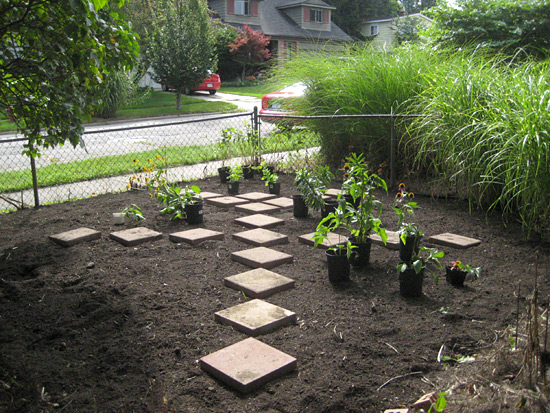
Here is the same bed viewed from the sidewalk at the edge of the property. The roses were placed at the edges of the bed and not next to the path where a gardener would get scratched up. The coneflowers at the back will provide a tall backdrop for the bed.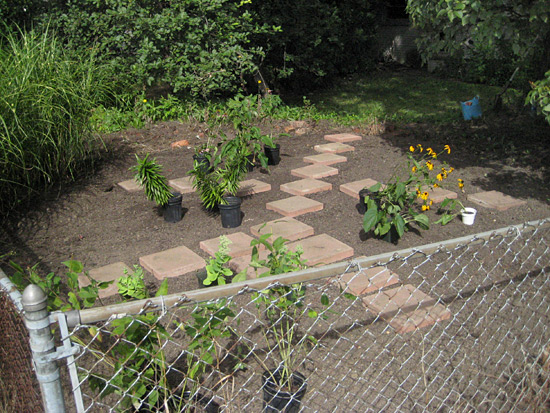
And here is the bed once again, this time viewed across the backyard from the kitchen window. That same backdrop of purple coneflowers will create a large enough stand to be admired from this angle as well.
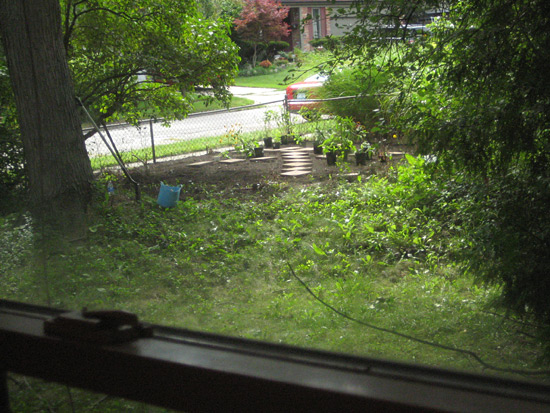
Finally we planted and watered the plants into the bed.
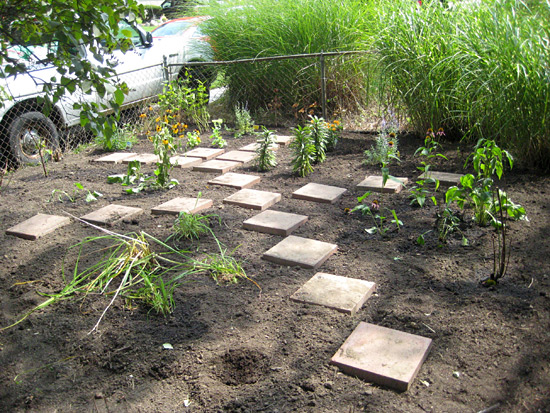
Finishing Touches
To help keep moisture in the soil for the new plants and block sunlight from the thistles more than likely beneath surface, we mulched the bed. Cypress mulch was applied 3 inches thick throughout, even under the stepping stones. Here is the finished bed from the backyard.
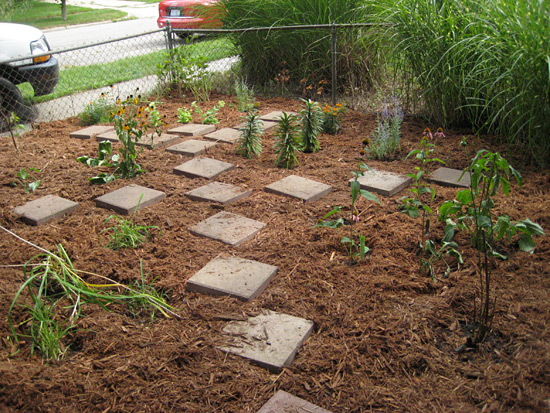
And here it is from the sidewalk. 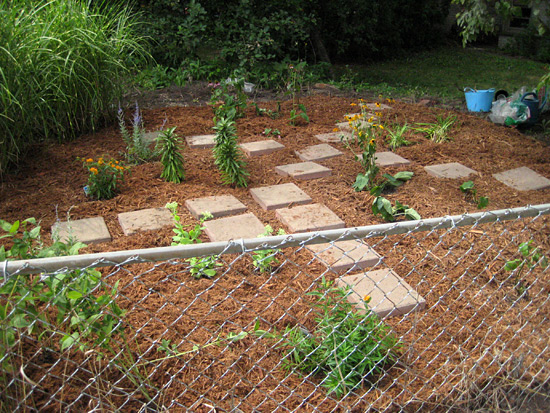
It was really, really, REALLY hard for me not to place the plants closer together. However, I had learned it is better to allow the plants room to grow toward each other over the years rather than on top of each other during the second season.
Hopefully our winter is kind to the garden and all these transplants make it through to spring. In our Zone 6, if we plant by the end of summer, fall allows an adequate amount of time for the plants to settle in before the snow flies. I’m excited to see this bed next spring.